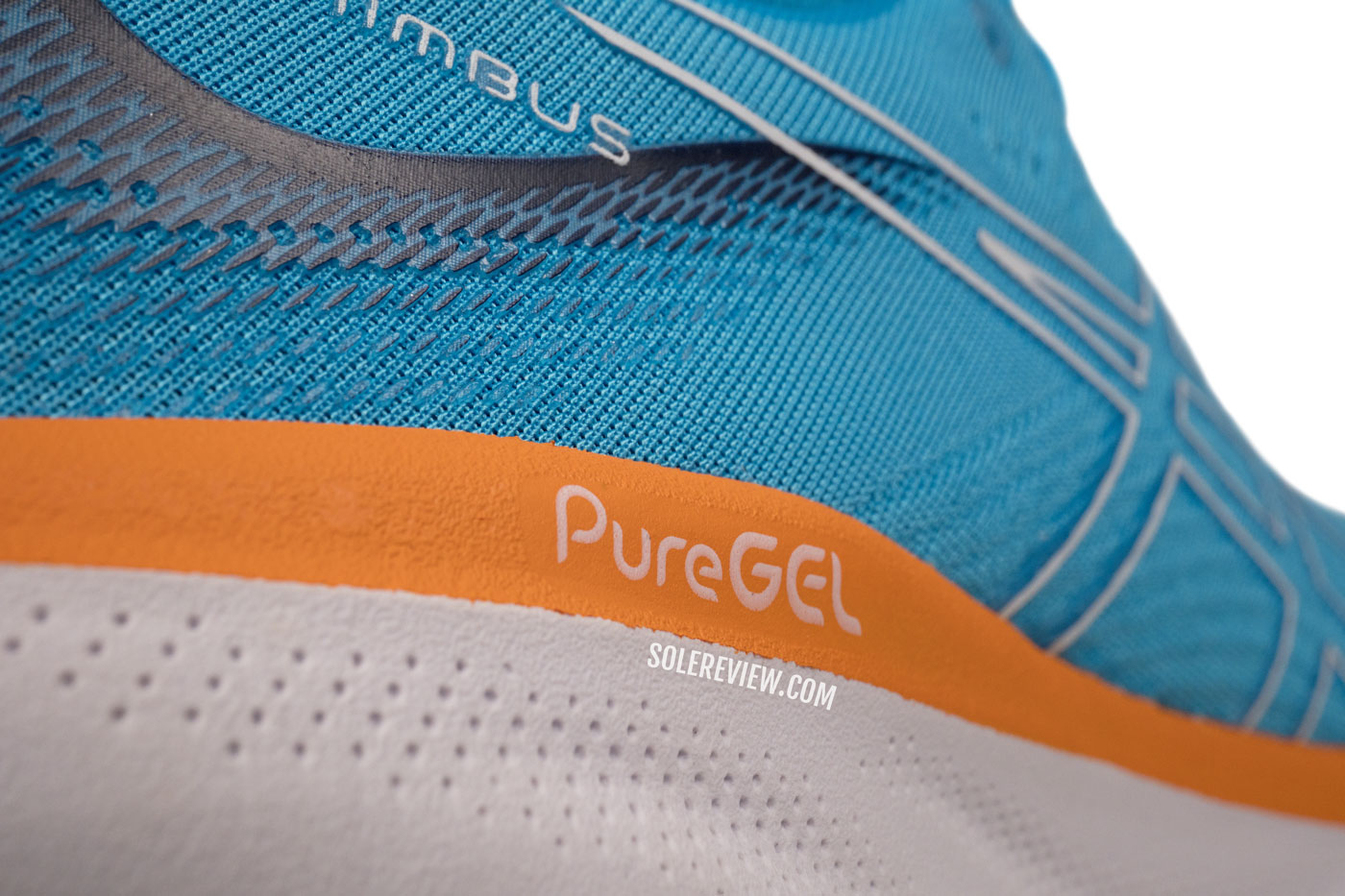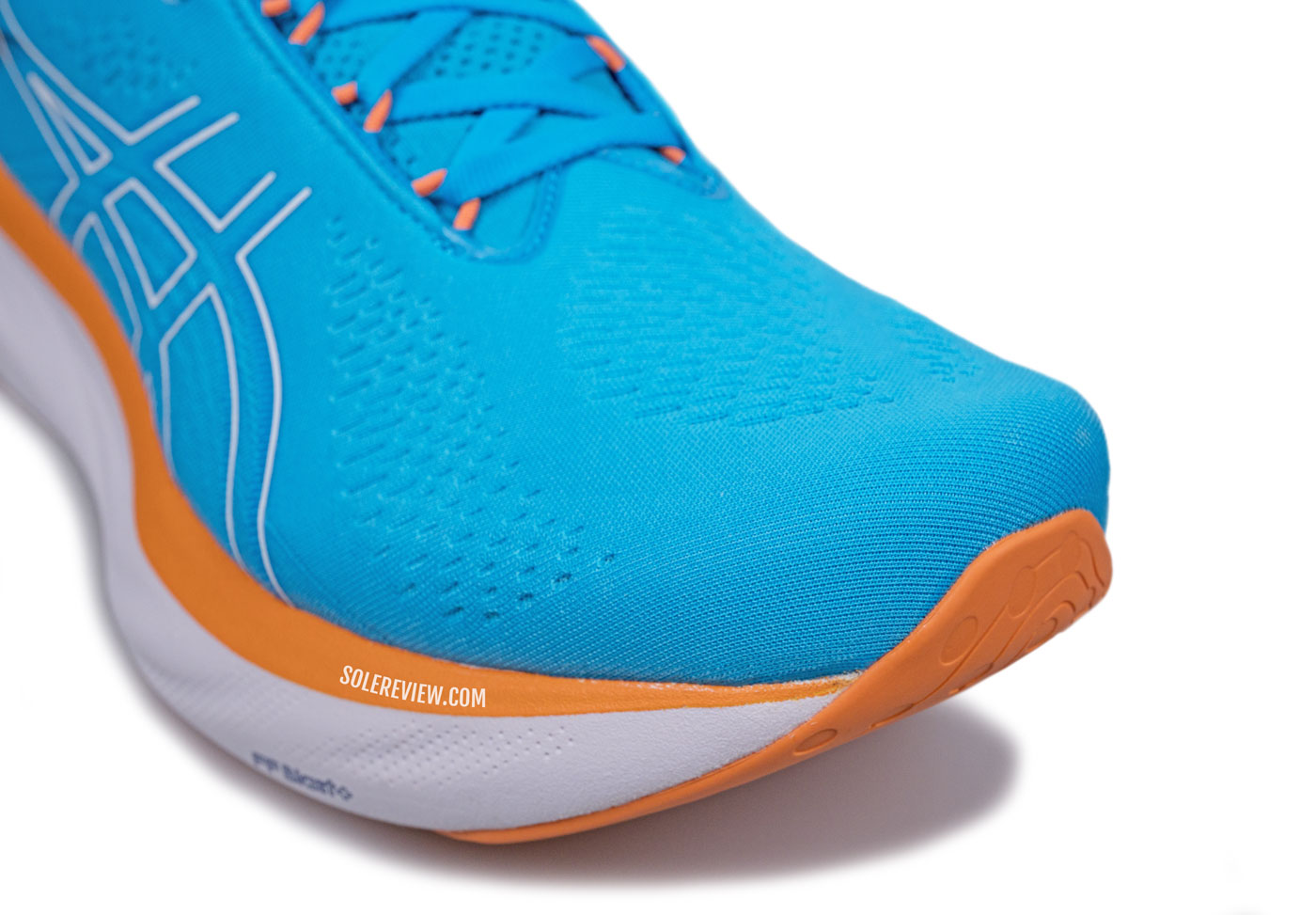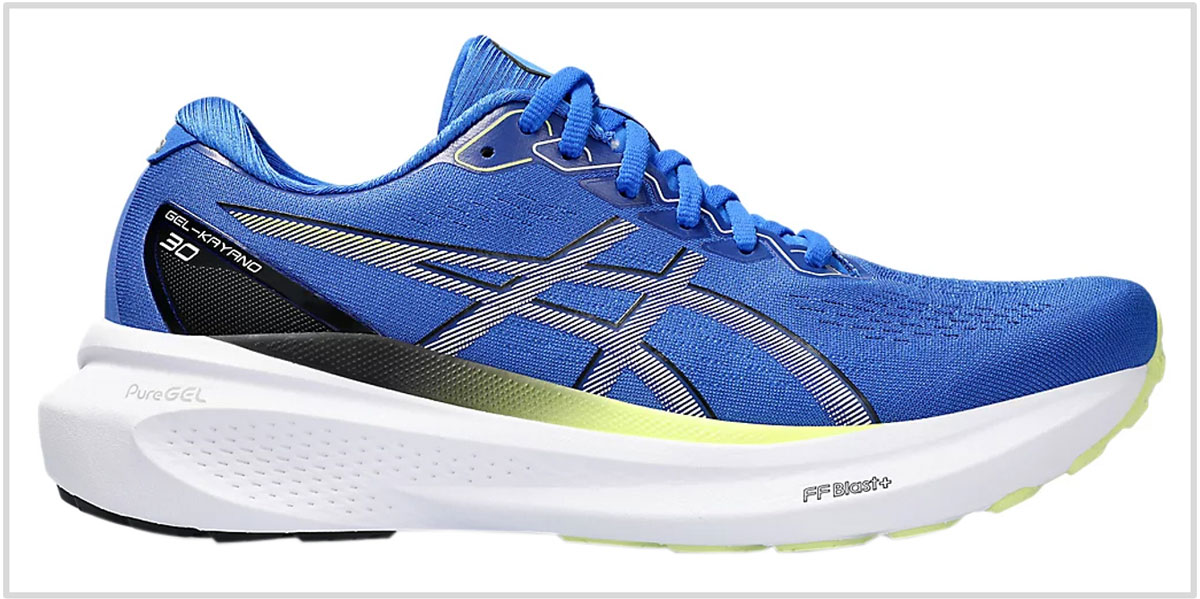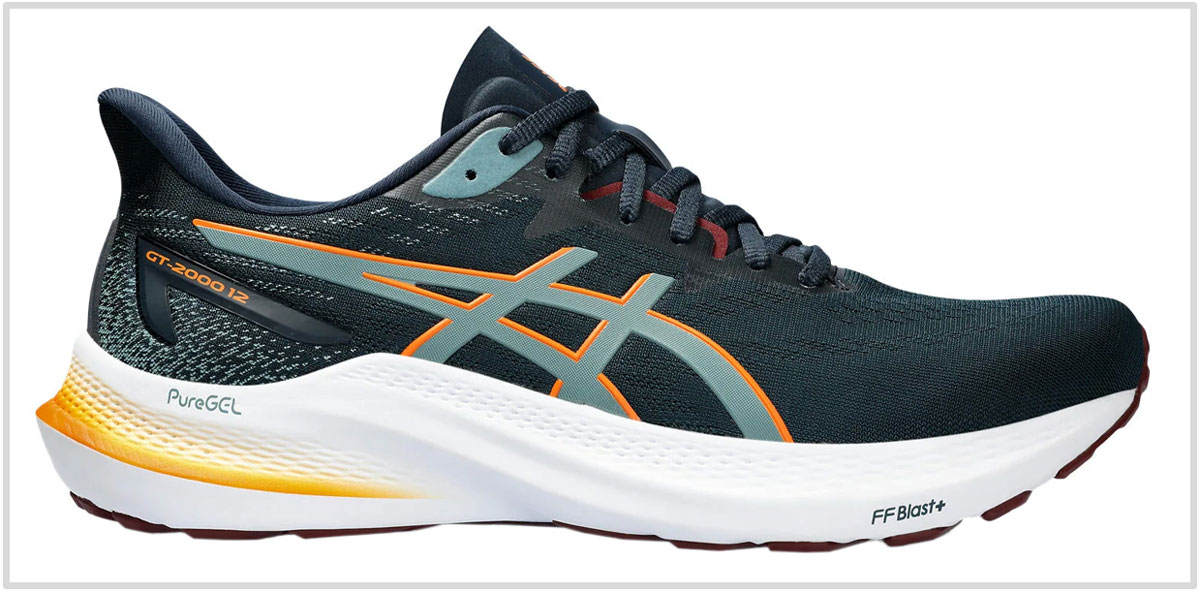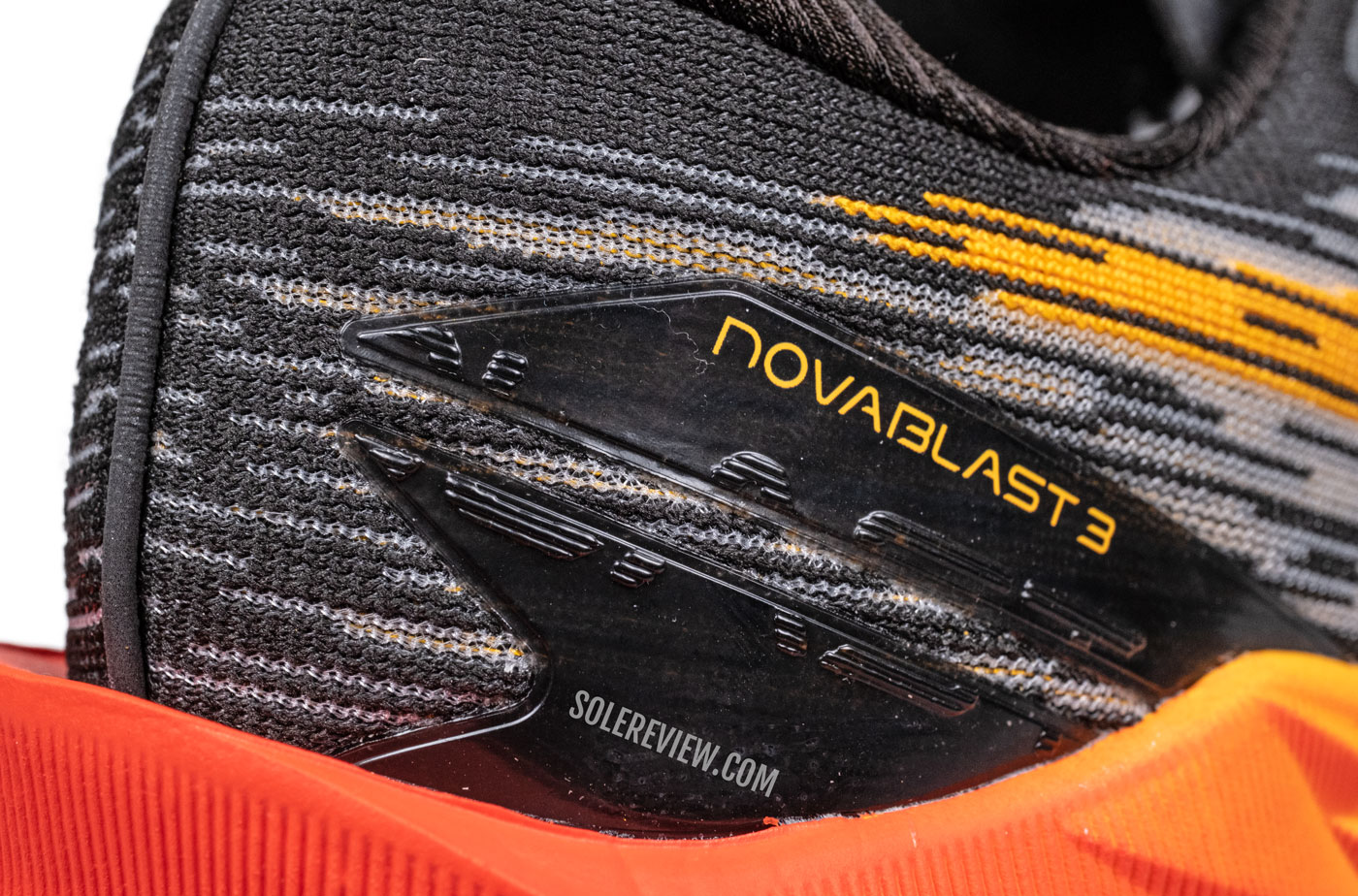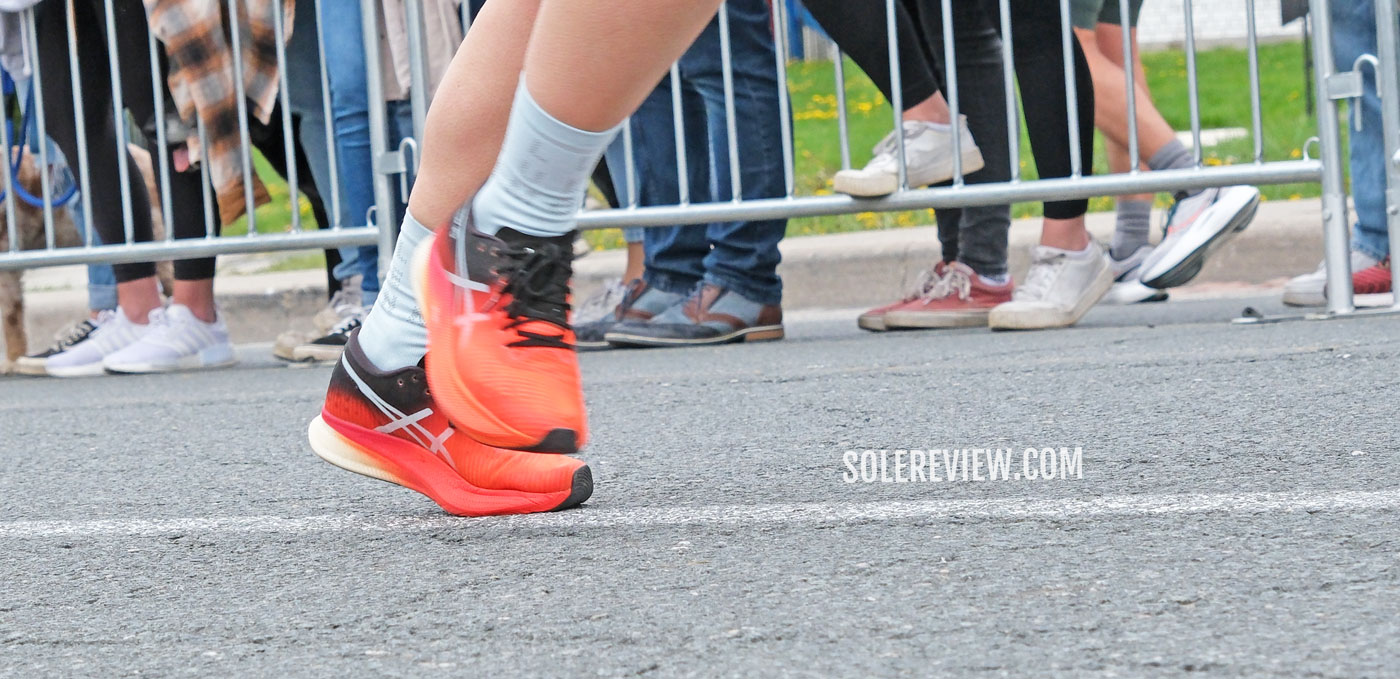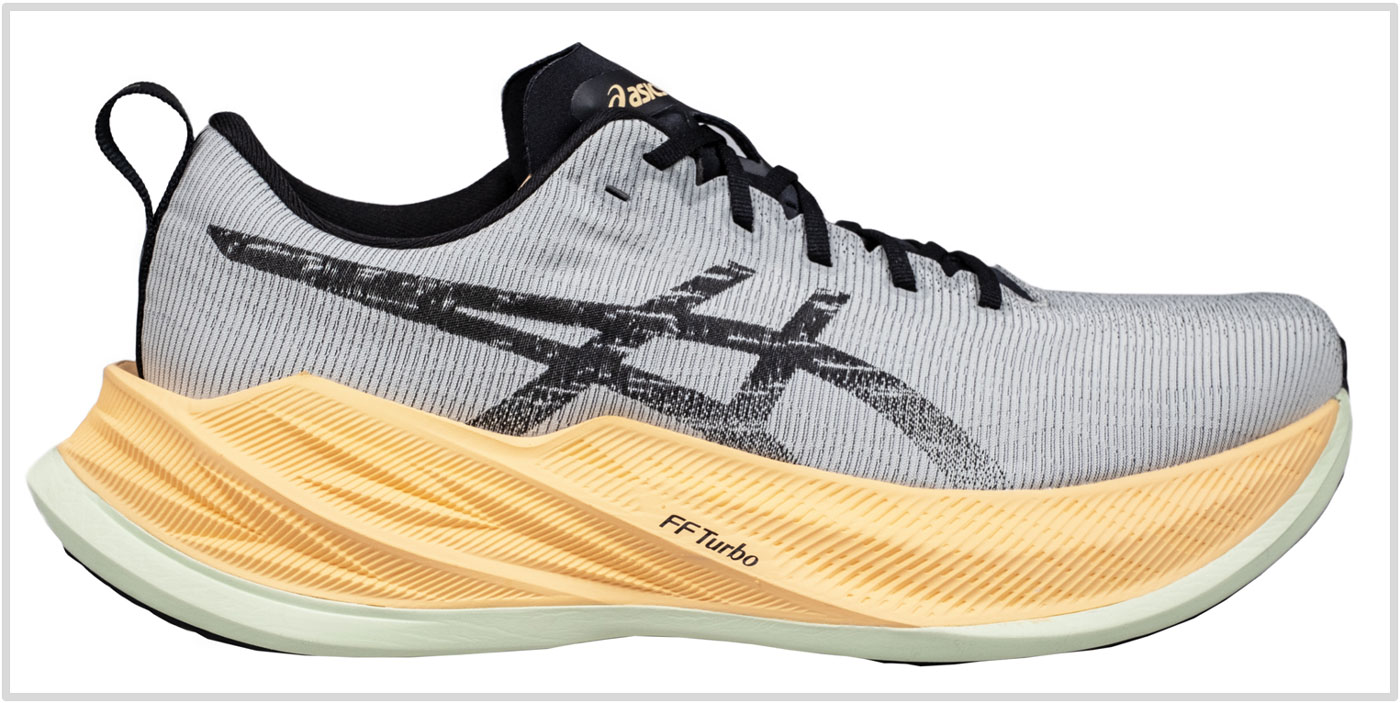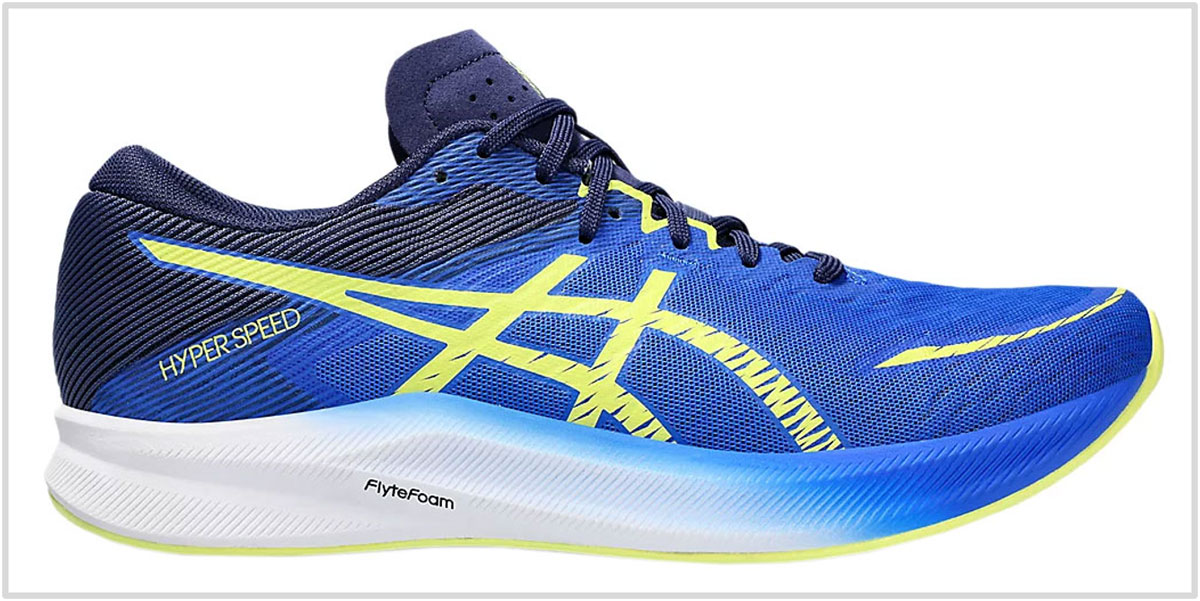This article has been updated with current models for October 2023. The Excite 9, Hyper Speed 2, GT-2000 11, and Kayano 29 have been replaced with their updated versions. Except for the narrower ‘B’ width, the women’s models are almost identical to men’s. The Asics Kayano 30 and GT-2000 12 have different stack heights for men and women, and so does the Nimbus 25.
In this product guide:
- 1. Factors to consider
- 2. Best for beginners: Asics Cumulus 25
- 3. Best for long runs: Asics Nimbus 25
- 4. Best for overpronators: Asics Kayano 30
- 5. Best for overpronators: Asics GT-2000 12
- 6. Best for tempo runs: Asics Novablast 3
- 7. Best for marathons: Asics Metaspeed Sky
- 8. Best for marathons: Asics Superblast
- 9. Best for 5K: Asics Hyper Speed 3
- 10. Best for 5K: Asics Lyteracer 4
- 11. Best for trail running: Asics Gel-Trabuco 11
- 12. Best affordable trainer: Asics Gel-Excite 10
Asics has reinvented itself over the last few years, and if there’s any sign of complacency, we’ve yet to see it.
The brand has also done an excellent job of bringing the old and new together. On one hand, we see popular models like the Nimbus, Cumulus, and Kayano in the catalog, but updated with fresher designs and materials.
There are fun products like the Superblast – a softer, lighter, and bouncier version of the Novablast. Using the lightweight Flytefoam Turbo on a rocker midsole makes the Superblast comfortable and quick.
Also, the Japanese company is one of the last safe havens for affordable low-profile racers like the $80 Lyteracer 4 and $90 Hyper Speed 2. Occasionally, it’s nice to have a traditional racer for speedwork rather than wobbly Carbon-plated running shoes.
Trail running shoes have always been Asics’s Achilles heel, and that hasn’t changed. That said, the Gel-Trabuco 11 is a decent trail runner, and so is the Fuji Lite 3.
1) Best for beginners: Asics Cumulus 25
There’s a good reason why the updated Nimbus Lite hasn’t shown up this year. The Cumulus 25 and Nimbus 25 are very different than their predecessors.
We cover the Nimbus 25 in the next section, but the Cumulus 25 also goes through a similar redesign process. The new Cumulus feels similar to the Nimbus Lite – the visible Gel pad is gone, and so is the slow-loading ride quality.
Asics adds 2 mm of stack height to the new midsole that’s 100% Flytefoam Blast+ on the outside, and has a small Gel unit under the heel. The midsole has a mild rocker profile that previously did not exist on the Cumulus.
The outcome is anyone’s guess. The ride is more comfortable than the Cumulus 24, and the new shoe feels quicker due to the midsole shape.
Overall, the Cumulus’s balanced ride character is a good fit for runners of all experience classes, be it a beginner or a veteran marathoner who wants a versatile everyday trainer.
The true-to-size upper uses a combination of speed loops and soft meshes to achieve a comfortable and secure fit. The upper suffers from poor ventilation, so it’s going to run hot during the summers.
2) Best for soft cushioning: Asics Nimbus 25
The Nimbus 25 isn’t anything like the 24, or any other Nimbus that came before it.
For 2023, Asics opts for a bold Nimbus redesign. The midsole is now full-length Flytefoam Blast+, a softer and livelier variant of the standard Flytefoam. Inside the heel is a smaller Gel unit called ‘Pure Gel’. Our detailed review breaks down the Nimbus 25’s design and ride experience.
This also means that the rearfoot no longer has a visible Gel window. The forefoot doesn’t have any Gel either – not that it mattered anyway.
On the road, the Nimbus 25 delivers an extremely cushioned ride with a noticeably higher pep.
Unlike the previous models, the new Nimbus doesn’t behave like a long-distance shoe for easy runs. Sure, it does high-mileage runs just fine, but the forefoot midsole makes it much easier to go faster.
On the Nimbus 24, the foot had to work through the soft forefoot during the gait cycle. Here, the high toe spring and inflexible (but highly-cushioned) forefoot helps the foot roll forward – similar to what the Novablast does.
In short, not only is the new Nimbus 25 excellent for long runs like a marathon, but the significant changes also make it possible to dial in some speed.
On the flip side, the Nimbus 25’s outsole traction is average due to the new lug geometry and toe-spring; it’s a downgrade from the 24 and 23.
We like the new upper with its true-to-size fit and comfortable interiors. The tongue design will divide opinions, as the thin knitted tongue feels out of place on a shoe this plush.
As always, the Nimbus 25 has gender-specific cushioning. The Women’s version has a 1 mm lower stack height.
3) Best for overpronators: Asics Kayano 30
The Kayano was the longest continuing shoe series with a firmer medial post – until now. The Kayano 30 is nothing like the Kayano 29; it neither has a firmer medial wedge nor a visible Gel window. It now takes on a ‘supportive neutral’ form factor, and that means it’s a cushioned and supportive daily trainer with no prescriptive features.
So what does the Kayano 30 have that shoes like the Nimbus 25 do not? The midsole has raised midsole on both sides, as well as a firmer foam piece on the arch side. This is not exactly a medial post, but helps prevent the midsole from bottoming out.
The way we see it, the Kayano 30 is a rebadged Kayano Lite (which now has been dropped), so it has similar characteristics. The Flytefoam midsole provides deep and balance cushioning that works best for everyday runs and high-mileage training.
Premium materials are used throughout the upper to create a comfortable interior. The sizing fits true to size, and the Kayano also sells in a wide and extra wide. An extra-reflective ‘Lite-show’ edition is also available.
4) Best for overpronators: Asics GT-2000 12
Even the GT-2000 isn’t immune to the changes in the rapidly evolving running shoe industry. Asics no longer features the ‘Duomax’ medial post on the V12, nor does the midsole have a visible Gel unit. It’s now almost like a firmer version of the Cumulus 25, and with a hint of cushioning bias towards the outer side.
The Flytefoam Blast+ midsole is softly-cushioned, yet adequately supportive. The new geometry makes the ride more comfortable, and the transitions feel smoother due to the updated outsole design. In more ways than one, the GT-2000 12 feels very much like a scaled-down version of the Kayano 30.
Summing up the GT-2000 12 is easy. It’s a versatile daily trainer with supportive cushioning and a conforming fit.
The true-to-size upper has a design and fit character that resembles the past models. Components like the engineered mesh upper, welded overlays, and the traditional tongue and heel design produce a pleasing fit character.
5) Best for tempo runs: Asics Novablast 3
The Asics Novablast 3’s Flytefoam has a soft yet lively cushioning that’s ideal for high-mileage runs. The shoe’s 8.9-ounce (253-gram) weight delivers a high cushioning-to-weight ratio.
There’s a fair bit of spring in the semi-rocker midsole, so the runner benefits from a forward-biased transition quality. Also, the 8 mm heel-to-toe offset makes the Novablast 3 beginner-friendly. Our in-depth review explains everything.
In short, the Novablast 3 is a cushioned tempo trainer for everyday runs or races of up to a half marathon. While full marathons are also doable, we recommend softer racers with a plate – our recommendations are here.
The upper has a similar form factor as the Novablast 1 and 2, which means it fits securely and true-to-size.
6) Best for marathons: Asics Metaspeed Sky
Asics has a diverse assortment of running shoes with an internal plate. The first is the ‘Guidesole’ kind; shoes like the Glideride use a stiff Nylon plate to enhance the rocker sensation. The second is the Metaracer – a cushioned racer that promotes quick transitions through a stiff Carbon plate.
The third category would be models like Metaspeed Sky and Edge – running shoes that are inspired by the Nike Vaporfly form factor. In other words, there’s a curved Carbon plate inside a soft midsole to deliver the signature cushioning ‘snap’ or springiness.
Both the Metaspeed models use the Asics Flytefoam Turbo material – a responsive foam that feels like a blend between New Balance Fuelcell and adidas Lightstrike Pro.
The FF Turbo is a soft and bouncy cushioning platform, but with a resilient overtone. And like most other superfoams, it adds sufficient comfort for marathon distances.
The full-length Carbon plate does the rest – it adds a sense of pushback under the heel, and makes the forefoot transitions quicker. Asics uses a specially formulated outsole rubber to improve the grip quality.
7) Best for marathons: Asics Superblast
Not everyone wants a marathon racer with a plate. On the other end of the spectrum are shoes that are generously cushioned but miss the tempo-friendly pep that’s useful on race day.
The Asics Superblast is a unique running shoe that delivers the best of both worlds. Our wear-tested review is here.
The wide and thick rocker midsole uses the lightweight Flytefoam Turbo (from the Metaspeed) over a firmer Flytefoam Blast+ bed.
These foam layers work together with the rocker profile to deliver a very comfortable ride that also manages to feel quick.
The wide midsole footprint also adds stability, an area where a lot of plated racers struggle.
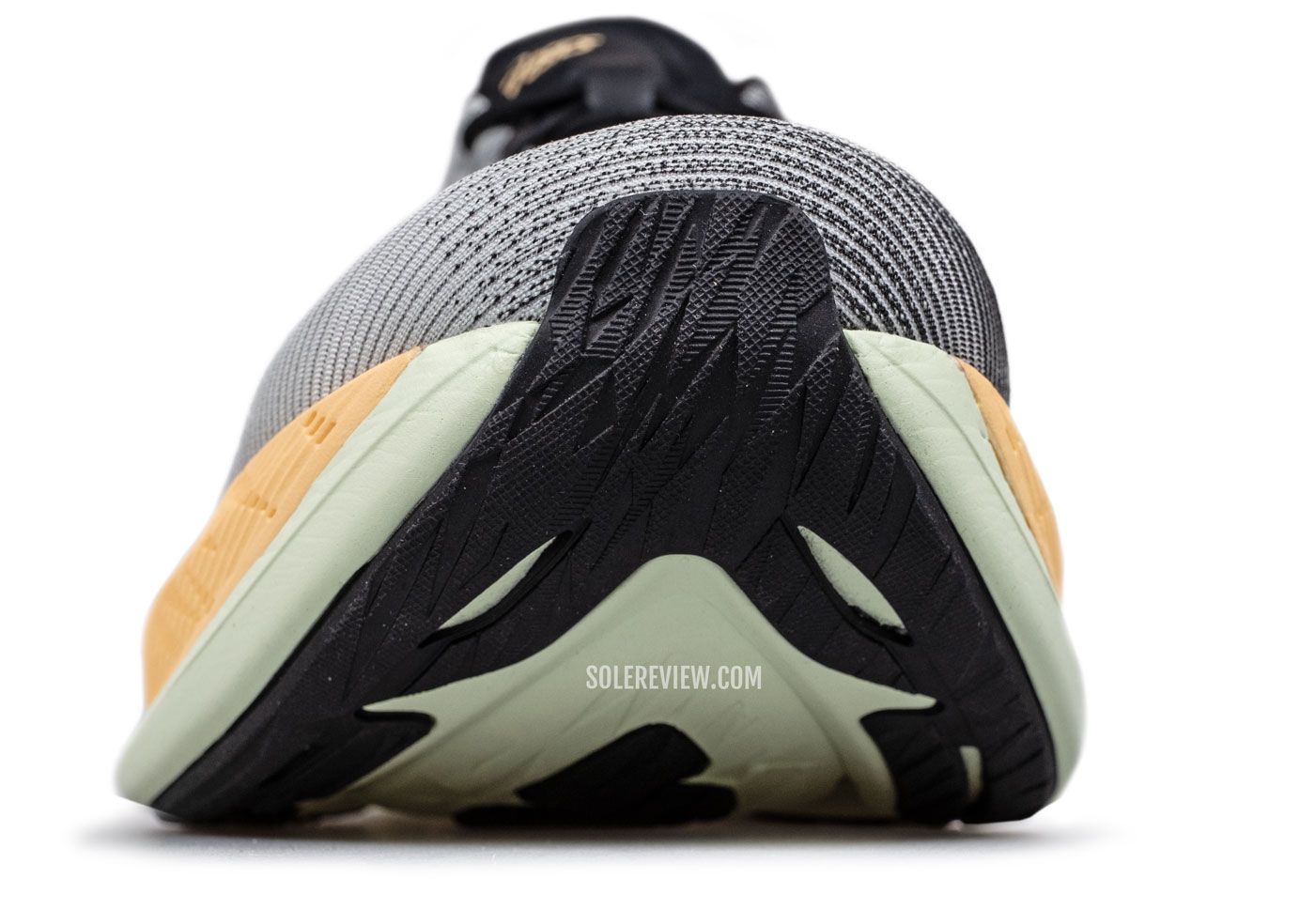
The rocker midsole helps the foot during the transition process. In short, this is a cushioned trainer that’s also capable of tempo runs.
The Superblast is also a good alternative – and upgrade – from the firmer Novablast. Sure, there’s a price premium, but it’s still less expensive than the plated trainers from the Metaspeed series.
The true-to-size upper performs as expected. It’s lightweight, secure, and smooth on the inside.
8) Budget road racer: Asics HyperSpeed 3
The Hyper Speed 3 has nothing in common with the namesake HyperSpeed 6 or 7 from a few years ago. This Hyper Speed is more cushioned, but firm – thus making it a comfortable speed trainer for 10K distances.
If the Hyper Speed V3 looks familiar, that’s because its design is based on the plate-equipped Metaracer.
That said, the foot does all the work during the transitions instead of the plate making things easier. Despite the updated midsole, it behaves similarly to the first-generation Hyper Speed.
It’s an excellent shoe for speed training and races – even though the midsole isn’t as low-profile as the previous generation Hyper Speed 7.
The upper is secure but well-ventilated and not overly narrow. That kind of fit character works great for longer speed runs as it accommodates the increased foot volume that occurs as a result of running long distances.
9) Best for 5K races: Asics Lyteracer 4
In a world filled with plated racers and $200+ shoes, the $80 Lyteracer 4 makes a strong case for itself. It’s a traditional short-distance racer, but reimagined with modern materials.
The firm and low-profile midsole uses Flytefoam Propel – an EVA foam blend with the necessary cushioning for 5K races, but nothing more.
The ride is not responsive, but has plenty of ground feedback for quick touch-and-go during speed runs. Though the outsole doesn’t have aggressive DSP lugs, the grip is excellent.
There’s even a plastic shank for stability, and the tight upper keeps the foot locked in. The fit runs a half-size short, as is typical of 5K racers.
10) Best for trail running: Asics Gel-Trabuco 11
Asics lacks a versatile trail running shoe like the Brooks Cascadia or Nike Terra Kiger 9.
Most Asics trail running shoes are good but not great; the Gel-Trabuco 11 is one of them. We also like the Fuji Lite 3, but the Trabuco is a better choice due to its articulated rock plate – a feature that the Fuji Lite 3 lacks.
The unimaginatively-named Asicsgrip outsole is excellent – both from a rubber compound and lug geometry viewpoint. The material sticks well on slick surfaces whereas the aggressive lugs bite well on dry trails.
The 8 mm heel-to-toe offset encourages full-contact or midfoot landings.
The Flytefoam midsole makes the ride cushioned yet supportive enough. The Trabuco 11 gets a brand-new midsole and outsole that does a couple of things differently than the Trabuco 10. The new midsole gains 2 mm of stack height for added comfort and leaves the medial post of the Trabuco 10 in the past.
Nonetheless, the stability isn’t compromised. The wide midsole minimizes cushioning bias on the trail, and the firm foam prevents the midsole from ‘bottoming’.
The Trabuco 11’s comfortable and true-to-size upper fit fits like a road shoe.
The secure interiors aren’t overly narrow so that the foot doesn’t feel boxed in. The rubberized layers add durability and some degree of splash resistance. The ‘lace garage’ (pouch) on the tongue prevents the laces from flapping around.
We recommend the waterproof Gore-Tex Trabuco 11 for increased versatility on wet trails.
11) Best affordable trainer: Asics Excite 10
The Gel-Excite 10 isn’t particularly ‘exciting’ but it gets the job done – if a budget daily trainer is what you’re looking for.
Unlike the $10 cheaper Gel-Contend, the Excite 10’s design taps into inspiration from the more expensive models. That applies to the engineered mesh upper and sculpted midsole.
Though the midsole is non-Flytefoam EVA, its contoured sidewalls are based on Asics’s new visual scheme. The Contend is also nice with a similar ride, but the Excite looks like a more expensive shoe. That’s the reason why we have featured the Excite 10 over the Contend.
Asics has done a good job with the upper too. The snug-fitting exterior holds the foot securely while managing to look good in the process. The heel and tongue have a generous amount of foam padding.
Do you own any of these shoes? Improve this review by sharing your insights – submit a review here.


